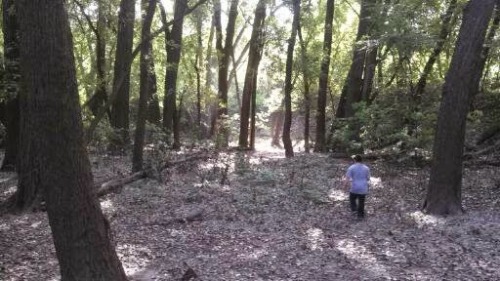
Some truly wild seeds – Honey locust pods, wild onions, autumn olive, cornellian cherries, purple asters, siberian pea shrub, and a wild black berry that was collected in Italy over the summer.
For a decade now, I have been a seed saver. I have saved tomato seeds and squash seeds. I have selected and saved my favorite beans to plant again, and I have tended garlic cloves and potato tubers from year to year. I have collected perennial herbs, flowers, fruits, and vegetables, and have planted trees that will produce into my twilight years.
These seeds and genetics represent a true investment and a savings account for the future. David Holmgren, one of the founders of Permaculture and author of Permaculture: Principles and Pathways devotes quite a bit of time on the subject of saving seeds. He argues that anyone preparing for a future that will have fewer fossil fuels available to use should include seed saving into their toolbox of skills and cultural knowledge.
When we save seeds, not only are we preserving genetic material, but also the accumulated solar energy of one summer’s growth to be used again in a future garden. This tradition is as old as agriculture itself. When we stopped roaming the wilds in search of food, and instead settled down to cultivate the Earth, seed saving assured a future harvest.
For right or wrong, feeding our world’s population now largely depends on industrialized, annual based agriculture. It is very efficient at turning oil and natural gas into edible calories, but it comes with a steep price. Habitat destruction, soil erosion, loss of biodiversity (both wild and domesticated), the dismantling of small scale farming traditions, and our seed sovereignty are all threatened by industrialized agriculture.
But as those of us who have seen the writing on the wall (when it pertains to the negative consequences of big ag) , and have begun the transition to a Permaculture based lifestyle because of these warning signs, we can begin to put a halt to all of this destruction. One farmer or person alone is not enough to change the course of current events, but just like the seeds of a dandelion, the more of us there are, the better chances we have of thriving and finding a place to put down roots.
The world, or more specifically humanity, is at a cross roads. We are at a place where we can decide as to whether we follow the path that industrial agriculture is leading us down, or the path that allows the wild seeds to flourish and heal the landscape.
Our gardens, as an extension of ourselves, our bodies, and communities, have a place in nature. While humans may display traits similar to an “invasive specie” a lot of the time, we can also play an important role in helping to heal some of the wounds we have created. As more of us see the evidence that our current path leads to destruction, it is only through conscience choices and a concerted effort that we can find a better and more resilient path to walk on.
That path, the one that leads to a future where we care for the Earth and all its inhabitants is possible. Its already there, waiting for us to first find it, and then be brave enough to follow it. It is there behind the monocrops of corn and soy and wheat and rice. It is there when the blood from CAFOs is washed away. It is there when we can move past the “40 hour” work week and find truly meaningful work for ourselves to participate in.
That path starts in our hearts, our homes and our gardens. It is weedy, and gnarled, and imperfect. It nourishes our bodies and inspires our dreams. It starts as a young sapling and ends up an old, twisted oak with deep roots. It is found in a tomato vine and a bean patch, a chicken coop and a beehive.
That path starts with our seeds. Those that contain the genetics of the food we eat, and those that start as dreams and finish as stories that we tell the next generation. Our seeds need to be protected and propagated, they are the future. Save them and plant them and tend them so that others can do the same in turn. Peace and Cheers.














